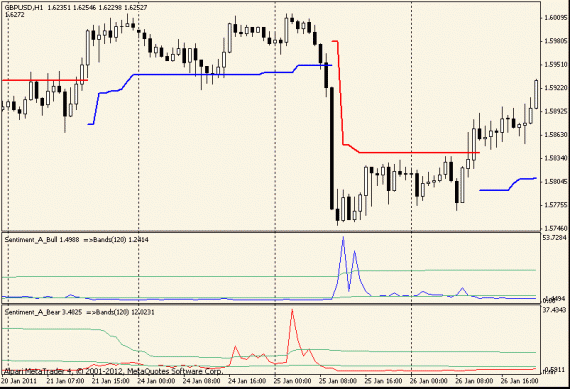Reading forex memory with fiveday Markov chains
Post on: 2 Май, 2015 No Comment

Imagine youre in the subway. You take the first train you can catch and pass by a random number of stops in a random direction, then transfer to another train. You go by another number of stations, and repeat the process. Your travels have both a random component (your random decisions) and a deterministic one (the subway routes and timetables, which all are connected rigidly).
Next, assume your transfers find you on an express train with a stop at the end of the route. Suddenly, while it contributed significantly to where you now find yourself, the random element is gone. Your fate is set. You quickly will travel to the end of the line and depart.
As it turns out, this process closely resembles that of the forex markets. In financial markets, similar situations also happen, except that Markov criterion is the subway timetable and bars on the price chart become stations. Here, well examine these processes in the context of the forex market on a daily time frame, with all calculations relating to closing of the trading day. Following an overview of Markov chains and a discussion of this unique way of viewing the market, well demonstrate an algorithm to build a simplified model for independent research.
Markov chains in FX
Millions of trading operations are performed in the forex market daily. When most of its participants share different views, the market moves sideways, but if there exists a prevailing sentiment, we witness stable price development. In the course of this development, every day has a certain connection with all previous days. This is a price memory that grows weaker as the market trades through time.
In mathematics, such relationships correspond to Markov processes, and sequences themselves are called Markov chains. Andrey Markov (1856-1922) was a Russian mathematician who specialized in stochastic processes, and many of his contributions lend themselves well to the financial market. Researching series of price movements based on the nonlinear dynamic model has made it possible to formalize Markov criterion for the forex market, and to determine points at which these processes start developing with high probability.
One of the main things about this model is the conclusion that five-day market chains are the most stable and predictable. As such, they provide the strongest base for a trading approach. The result of the model is the digital sentiment function d(t) that takes on a value +1 for upward motion, -1 for downward motion, and 0 for absence of any distinct sentiment. These chains conform according to two rules:
- If another chain is identified going in the same direction as a chain already building, its added to the previous chain. This increases its current length by five days;
- If theres a chain in the opposite direction, it cancels the previous chain and establishes another direction.














